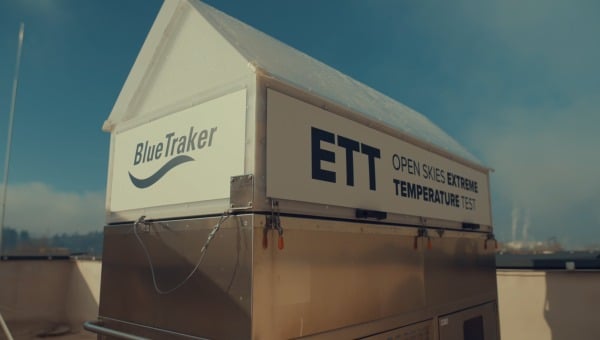Ships operating in the Arctic and Antarctic environments must endure the toughest weather conditions found on Earth – including extreme low temperatures. The equipment used on these ships therefore needs to be particularly robust and reliable to ensure safe operation under the most extreme conditions. But what does this mean for the design and construction of such equipment?
At BlueTraker, we face this challenge for all our equipment, with each element being carefully designed and then extensively tested. However, for the BlueTraker Arctic range, this process needs to be even more rigorous – especially with respect to ensuring the reliable operation of electronics at extremely low temperatures.
To prove this, let’s take a look at the additional testing of the BlueTraker Arctic range for low temperature operation.
So, how does one test the performance of marine grade tracking and monitoring equipment under extreme weather conditions without actually exposing these devices to such an environment? Commercially-available lab testing equipment may be able to handle all the temperature & icing requirements, but their physical construction also prevents the transmission and receiving of data, which is a core functionality to be tested. We need to be sure of faultless function and error-free communication with satellites during the tests.
We therefore built our own application-specific test chamber. Not only does it feature cooling down to -50°C, but it also enables continuous communication with all the required satellite and navigation systems.
In continuous operation, the equipment’s electronics generate their own heat and never drop to the harmful ambient temperature, ensuring the vital functions are maintained in these conditions. But what happens if, for whatever reason, the power is lost and this self-heating stops. Switching on ‘frozen’ electronics can lead to malfunction, or even catastrophic failure. BlueTraker Arctic features a staged power-up with pre-heating, protecting the core electronics until the enclosure’s internal temperature has reached a safe temperature. The correct function of this is also what we test. The electronics for the Cold Start phase are specially designed using discrete semiconductor components which work faultlessly down to –55 °C.
We place the equipment (initially powered down) in the chamber, and let it soak until the entire unit has reached -50 °C. Then we power it up – this is known as Cold Start. Only once the internal heaters have brought the electronics up above -30 °C can they also be powered up and the unit’s full functions started. Depending on ambient conditions, an individual test can last up to 10 hours.
The chamber enables us to ensure the operation of all the elements involved (cold start protection, internal heater and core electronics and communication capabilities) under a range of conditions, including the most severe of ‘power-up from frozen’. With live connection to the relevant satellites and GSM/GPRS networks, we can ensure that the communication is always error-free and robust.
We have always been proud of our reputation for reliable systems, which means never cutting corners and frequently testing beyond the standards to ensure our products never let you down. For more information about our testing procedures and BlueTraker Artic solutions, feel free to contact us.
